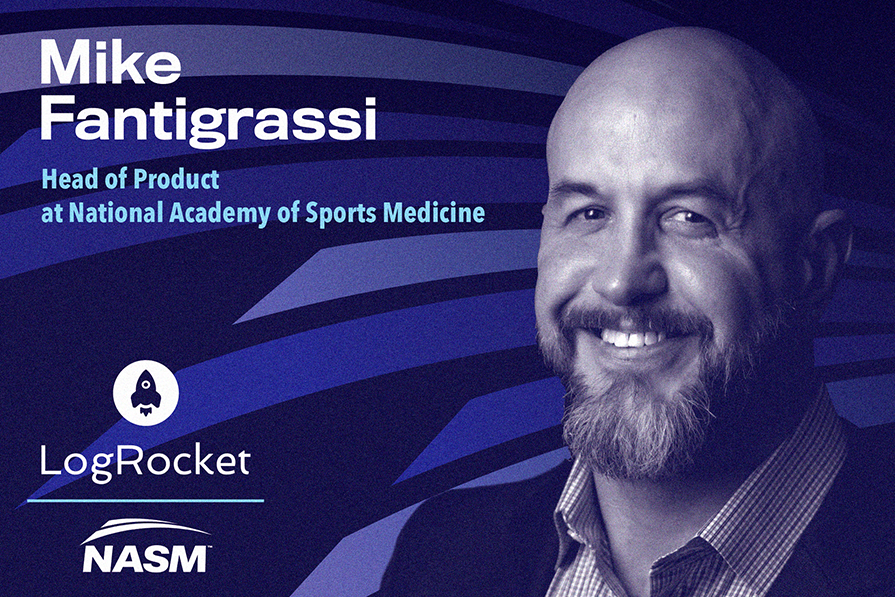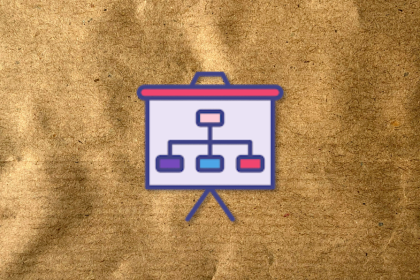Mike Fantigrassi is Head of Product at National Academy of Sports Medicine (NASM), a fitness organization offering certification programs for personal trainers and coaches. He started his career as a fitness manager, personal trainer, and nutrition coach and later joined NASM as an education success specialist. Mike moved up throughout the company, working as a master instructor, student success manager, director of professional services, and more before stepping into his current role as Head of Product.

In our conversation, Mike shares his experience helping transition NASM to a product-led growth model and the challenges that came with it. He talks about effective change management practices, as well as how the team is realizing new benefits around output, delivery, and customer centricity.
National Academy of Sports Medicine was established in 1987 and is the global leader in credentials for fitness and wellness professionals — specifically certified personal trainers. There are also other aspects of the brand like nutrition coaching, wellness coaching, and group exercise. NASM is part of a larger company, Ascend Learning, that serves the healthcare market. We have multiple business units, but NASM focuses specifically on fitness and wellness.
There wasn’t a specific trigger, but it was certainly needed. When I moved into my current role in 2017, every product manager went through the Pragmatic Institute for product management training. We talked about being a product-led company, but that wasn’t fully implemented throughout the business.
A year and a half ago, leadership at Ascend Learning (our parent company) decided we should focus on this, so they brought in a consulting group to look at the business and provide the necessary framework to help us become product-led. Since this initiative started at the top, we had support on every level.
The model we used is based on product delivery teams, which is essentially a cross-functional group. In our case, each team is led by a product manager. The team meets regularly, but there are representatives from different departments like marketing, sales, operations, content development, and more.
In this framework, the team has a suite of products that they own. Much of the decision-making and strategy comes from them, and that was a big change compared to traditional top-down decision-making. Our leadership affirmed that the people who know much of the best are the ones who interact with them every day — our frontline employees, so to speak. They should all have input, and a PM’s job is to make sure they’re talking to all the different internal stakeholders and customers to create products that meet the right needs.
A breakdown occurs from not doing the proper customer discovery and building the wrong solution. Another scenario is when a product is built using good data, but the sales and marketing teams are not aligned on who the market is for the product. We could build a product after conducting market research, and then say, “We’re going to try to bring this to a new audience that’s a little bit different from the audience that we know really well.” If we’re not aligned internally, it could be a total miss.
This is often the hardest part. At the fundamental level, when we talk to people about it, they say, “Oh yeah, that makes complete sense!” However, when we actually get up and running, there are challenges. We made a shift to PLG shortly after Ascend Learning went through this transition. We took a lot of their learnings and adapted them to our org. Our business is much smaller — we have fewer product delivery teams — but the principles we wanted to instill were the same.
We decided to move quickly, because the real learning happens on the job. As much as we can prepare, people learn the most by applying concepts in real life. We held a comprehensive two-day workshop with about 50 employees — all the people who would be part of those core teams, as well as extended team members. Ultimately, everyone is part of product. Once we got everyone to understand that they all had a part in bringing solutions to the table, it clicked.
Another important component of change management is having a complete picture of the problem. When we’re siloed and not aligned, there was a lot of work that we never got over the finish line due to blockers. As a result, we have to truly vet an idea from the beginning and look at it across the board. Do we have clear objectives for the organization, and does this project align with them? We may have a great idea, but if it’s not aligned with what we’re trying to accomplish right now, it’s not going to work.
Role clarity was an element that we struggled with for a little while. I anticipated it, but it was still a point of struggle. We found that after the initial training, follow-ups and over-communication were key.
One of the reasons why we quickly ran a second group virtually was to bring in a larger group from our organization to clear up questions they had. With the timing of the training and how it coincided with the end of the year, we continued hiring to complete the teams. Now, I’m working on the next version of training, and the benefit is that I can bring in people within the organization who have been working under this model for a little while. They’re able to share specific examples of what they’re doing as part of these teams, and that will reduce a lot of the friction.
We’re still working on the priority sheet — it can become very long, and the list always includes stuff that we get really excited about. We have so many opportunities to pursue partnerships, develop new products, and more, but if we spread ourselves too thin, none of it gets done. We want to identify our biggest opportunities and, whether through improvements to a product or an internal process, unlock capabilities to be more efficient, and free up time to work on those initiatives.
One of the analogies I always use goes back to fitness. There are three basic levels for fitness training success: stabilization, strength, and power. It’s the same thing with an organization. The stabilization phase is whether or not we move well. When a person squats down, are they squatting with their knees straight ahead, feet in place, and with good posture? That’s our foundation — we’re putting strength on top of that. On the other hand, when something doesn’t move well, someone is likely to get hurt.
On the top level is power, like jumping up and down. This is very high intensity, and this is where something can rupture or tear. It’s the same thing with a business — if we have foundational processes that are broken or shaky, higher-level initiatives will break. That’s when we have to slow down and do things that aren’t very fun or interesting, but are critical. The hard part is just going back and saying, “We’ve been kicking a can on this thing for two years, let’s just address this because it’s going to save us so much time.”
We have three different product delivery teams, and one of them is focused on professional enablement. We offer a membership called NASM One, which provides continuing education for trainers after they become certified. Previously, we only had one option, offered at $35 per month. One of our PMs, Tony, suggested we offer the option for members to pay in full.
That sounds like a very basic change, but it was a challenge to get over the finish line because of some technical difficulties. There are legal requirements and restrictions around offering products on subscription or payment plans, as well as offering discounts with implied interest.
In the past, we probably wouldn’t have pursued this idea because of all the back and forth it required. But, Tony dug in, faced some initial blockers, and then did more research to ultimately overcome them. This payment option now makes up a significant percent of new membership subscriptions.
We opened up an idea submission form, and have gotten a lot of feedback through that channel. We’ve seen a lot of benefits from giving people more of a voice so they feel that they’re part of the process and what we’re building. It’s been great from a morale standpoint, and it also keeps us disciplined in what we’re working on, bringing to market, and getting over the finish line.
We’ve pushed out a lot more from an output perspective and have seen better outcomes after our change to product-led growth, including a revenue increase. Q4 of last year was the best quarter we’ve had by far. That led to a lot of positive energy and enthusiasm to keep growing. We also went through extensive training with our product managers and teams to own the product strategy. Right now, we’re focusing on better understanding the customer journey and optimizing our existing products.
Lastly, by allowing the space for the product managers to be more customer-facing, we’ll be able to obtain a lot of those learnings. Prior to this, we had product managers, but we didn’t have business product owners. The business product owners act like lightweight product managers — they help with project management and take on some PM duties. The team is now fully built out, and I think we’ll start to realize the benefits of that structure throughout this year and next.
I’d definitely say that the whole company should go through training. Do it in levels — start with the core team and slowly expand to be company-wide. Also, make sure that the leadership team is familiar with why the initiative is happening. They don’t necessarily need to know the nuts and bolts of how everything’s going to work, but they need to have the big picture. That way, they’re also reinforcing that message.
It’s so important for this sentiment to come down from the CEO. It’s much harder to make changes without that alignment. Once leadership is aligned, they’re knowledgeable enough to answer some of the questions and redirect them as needed.
Also, it’s good to be proactive. We don’t want people saying, “Well, no one told me that,” or, “I didn’t get that information,” so be sure to share information freely. If someone needs to know something, tell them, and if you don’t have the answer, proactively grab it from others. That builds the right culture where people are sharing, learning, and always trying to help others.

LogRocket identifies friction points in the user experience so you can make informed decisions about product and design changes that must happen to hit your goals.
With LogRocket, you can understand the scope of the issues affecting your product and prioritize the changes that need to be made. LogRocket simplifies workflows by allowing Engineering, Product, UX, and Design teams to work from the same data as you, eliminating any confusion about what needs to be done.
Get your teams on the same page — try LogRocket today.

A practical guide for PMs who want to stop being bottlenecks, delegate smarter, and lead teams effectively with a clear ownership framework.

Stop letting unreliable data block features. Treat data as inventory to track quality, ownership, and ship with confidence.

Learn why slide decks slow teams down and explore better tools like whiteboards, PRDs, and prototypes to improve collaboration and alignment.

AI PM roles are evolving fast. Learn the five types of AI PMs, the skills they need, and how they shape AI products across industries.
One Reply to "Leader Spotlight: Cascading down a product-led culture, with Mike Fantigrassi"
Çok işime yaradı bende bunu nasıl yapacağımı araştırıyorum. Paylaşım için teşekkür ederim.